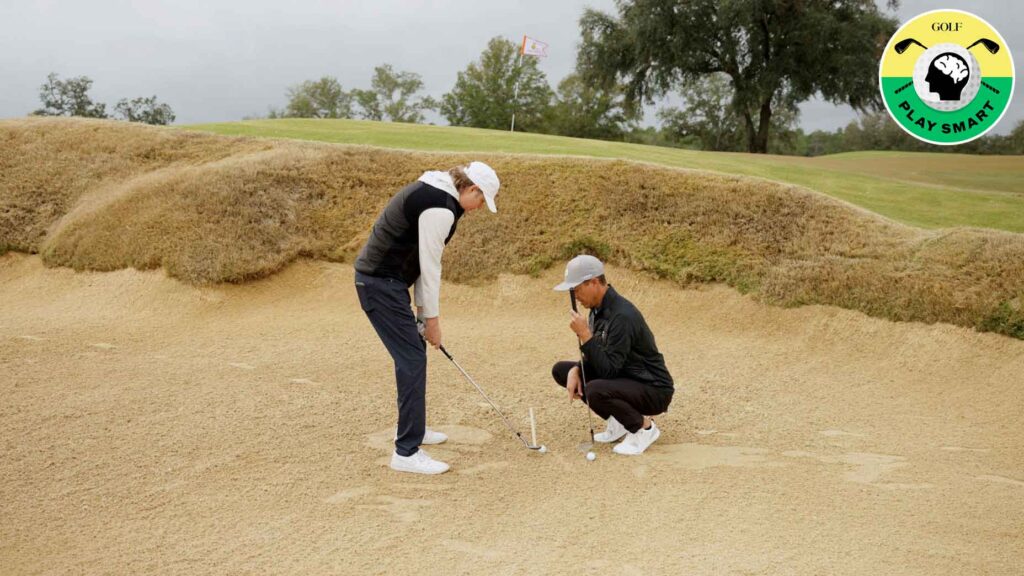Mastering Bunker Shots: Unlocking the Secrets to a Better Golf Game
Welcome to Play Smart, a dedicated space on GOLF.com where we strive to help you transform your golf game. In this article, we delve into one of the most challenging aspects of golf: bunker shots. This skill can make or break your performance on the course, setting apart seasoned pros from recreational golfers.
Bunker shots often strike fear into the hearts of weekend warriors. It’s not just about getting the ball near the hole; it’s primarily about escaping the sand. Yet, you may have noticed how effortlessly professional golfers handle these shots. The truth is, their mastery isn’t just a product of talent—it’s a culmination of extensive practice and refined technique. This article unravels the secrets behind the pros’ success, enabling you to lower your scores and gain confidence.
Why Bunker Shots Are Daunting for Recreational Players
Most recreational golfers approach bunker shots with trepidation. The dread often stems from a lack of understanding. Unlike professional players who practice their techniques repeatedly, many amateurs resort to haphazard, trial-and-error methods. The fear of hitting a poor shot becomes a self-fulfilling prophecy, leading to frustration and further anxiety when faced with a bunker.
In stark contrast, tour professionals have spent countless hours honing their skills in challenging conditions. Their comprehensive training involves not just physical practice but also mental preparation that allows them to approach sandy situations calmly and confidently. This mindset is crucial as it allows them to execute shots with precision even in taxing scenarios.
The Technique Behind Pro-Level Bunker Shots
As a budding golfer, it’s essential to understand the fundamental mechanics of a solid bunker shot. Traditional teachings suggest an open stance relative to your target line, allowing the club to splash through the sand. However, this technique is evolving. Many professionals now advocate for a stance that is more square, simplifying the execution and improving consistency.
The modern approach highlights the importance of hand positioning. While one might expect to keep hands higher during the setup, the current trend encourages lowering your hands at address. This not only helps in aiming the clubface directly at your target but also facilitates a smooth, neutral swing path. In doing so, amateurs can escape the sand without resorting to erratic, out-to-in swings.
Practice Strategies for Improving Your Bunker Game
To enhance your bunker skills, regular practice is crucial. Start by finding a local practice bunker where you can comfortably experiment with techniques. Spend some time focusing on your grip, stance, and swing mechanics. Remember, the key to thriving in these challenging conditions lies in familiarity and muscle memory.
Another effective drill is the “splash” drill. Place a few balls in the bunker and practice making contact with the sand, aiming to toss out a small amount beneath the ball without worrying about distance. This exercise mimics the action of splashing the ball out of the sand and reinforces the concept of focusing on the sand rather than the ball itself.
Observing the Pros: Learning from the Best
Your journey to mastering bunker shots can be significantly expedited by watching the professionals. Other than noting their techniques, pay attention to their strategic decision-making. Observe how they choose to aim and execute their shots, often opting for different approaches based on the situation’s demands.
In his instructional video, Parker McLachlin—known as the Short Game Chef—demonstrates the modern techniques used by professionals. By following his lead, you can better grasp the nuances that separate amateur shots from professional-level bunker play.
Building Confidence: Rehearse Your Bunker Shot Routine
Like any skill in golf, confidence is key. Consider establishing a repeatable routine for your bunker shots. This may include visualizing the shot, breathing techniques to calm nerves, and focusing on key swing checkpoints. Consistency in your preparation can translate to improved execution during actual rounds.
Don’t be afraid to fail in practice. Each unsuccessful attempt provides valuable information about your swing mechanics. Use these experiences to learn and adapt, reinforcing the muscles and processes that lead to successful shots in the future.
The Psychological Aspect of Playing from the Sand
Beyond technique, the mental game plays a significant role in bunker performance. Developing a positive mindset when approaching a bunker shot can enhance your execution. Remind yourself that this is a chance to demonstrate your skills rather than a daunting challenge. Visualization techniques can help in fostering this mindset, so draw mental pictures of successful shots while visualizing the desired ball trajectory and landing zone.
Investing in Your Game: Resources for Continued Improvement
If you find yourself seeking expert guidance beyond traditional lessons, consider resources like ShortGameChef.com. Created by Parker McLachlin, it offers personalized tips, drills, and educational content explicitly designed to improve your short game—even if you’re struggling with bunker challenges.
Membership options provide access to 300+ videos filled with tricks and strategies to elevate your game, ensuring you’re always in tune with the latest techniques and methods that professionals swear by.
Conclusion
Bunker shots don’t have to be the bane of your golfing existence. By understanding proper techniques, incorporating consistent practice, and developing a streamlined mental approach, you can transform these challenging situations into opportunities for demonstration of your skills.
Becoming a better golfer involves dedication and a willingness to learn. Equip yourself with the right tools and the proper mindset, and you’ll be conquering bunkers like a pro in no time. Remember, every successful shot you make out of the sand is a step toward lowering your scores and enhancing your enjoyment of this beautiful game. It’s time to play smart.
By implementing these strategies into your golf routine, you’re not just preparing for the next round—you’re setting yourself up for a lifetime of enjoyment in the thrilling game of golf. Happy golfing!


